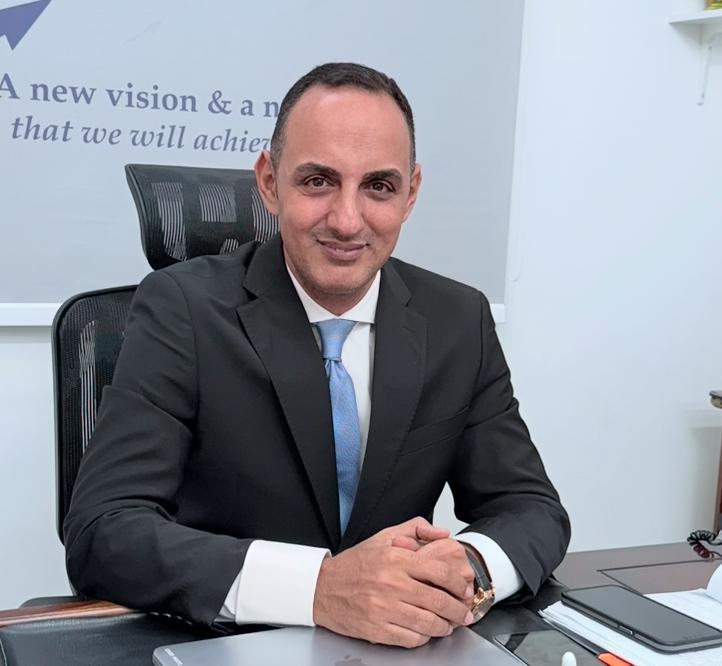Dr. Mohamed Abdel Wahab, economic analyst and financial consultant, has sounded the alarm over the accelerating use of modern technology, messaging applications, and social media platforms in facilitating and executing money laundering operations worldwide, describing it as one of the most pressing contemporary challenges to international financial systems and efforts to combat organized crime.
In a press statement today, Dr. Abdel Wahab explained that digital tools—originally designed to enhance communication and streamline transactions—are increasingly being exploited by money laundering networks, which have adapted their tactics to match rapid technological advancements. He pointed out that platforms such as TikTok, Instagram, Telegram, and Snapchat have become fertile grounds for moving illicit funds under the guise of legitimate digital revenues, such as virtual gifts or the promotion of fabricated content.
Abdel Wahab noted that criminals are using these platforms to create fake business fronts or paid promotional campaigns, enabling dirty money to be injected into the formal economy as advertising revenues or digital payments.
He added that encrypted messaging applications such as WhatsApp and Signal are being used to coordinate transfers and transactions with complete secrecy, making it more difficult to trace the origins of funds and granting these networks a powerful ability to operate undetected in the digital space.
Shocking Global Figures
According to reports by the United Nations, the Union of Arab Banks, and blockchain analytics firm Chainalysis, Dr. Abdel Wahab revealed that the volume of laundered money worldwide ranges between $3 and $5 trillion annually—equivalent to 3–5% of global GDP. This, he said, highlights the widening gap between the sophistication of financial crime and the regulatory capacities of states, even those with advanced monitoring systems.
He stressed that cryptocurrencies have emerged as one of the leading tools for concealing and moving illicit funds, with the value of crypto-based laundering jumping from $1 billion in 2018 to $40.9 billion by the end of 2024, according to Chainalysis data.
In 2025, Abdel Wahab said, the world has seen a significant rise in money laundering cases, particularly in the digital space. Cryptocurrencies, he noted, are now widely used to evade authorities, with over 50% of laundering operations conducted through complex corporate structures, and real estate purchases accounting for 30% of all cases, according to specialized reports.
In Africa alone, illicit financial flows cause losses estimated at $90 billion annually—equivalent to 3.7% of the continent’s GDP—according to the United Nations Economic Commission for Africa.
Key Money Laundering Methods Today
Dr. Abdel Wahab outlined some of the most common modern laundering methods:
• Use of shell companies and fake business fronts – exploiting legitimate-looking legal entities to conceal illicit fund movements.
• Trade-Based Money Laundering (TBML) – inflating or undervaluing invoices for exports and imports to transfer funds across borders under the cover of trade.
• Real estate purchases in unregulated markets – particularly in countries with weak oversight, making property a prime laundering vehicle.
• Cross-border cash smuggling – a traditional method still prevalent in certain regions.
• Use of digital transactions and decentralized finance (DeFi) – exploiting unregulated fintech platforms where operations are difficult to trace.
Countries Most Involved in Money Laundering
Referring to the 2025 Basel Anti-Money Laundering Index, Abdel Wahab highlighted several countries ranked highest in money laundering risk: Haiti, Chad, Myanmar, the Democratic Republic of Congo, Mozambique, Guinea-Bissau, Gabon, and Venezuela. These nations, he noted, share weak regulatory frameworks and poor financial transparency, making them fertile environments for illicit activities.
Major Economies Under Scrutiny
Abdel Wahab stressed that major economies such as the United States, China, Russia, and Mexico also record high levels of money laundering. The vast size and complexity of their financial systems, he explained, create opportunities for concealing illicit funds. While these countries possess strong regulatory institutions, the sheer volume of financial transactions makes tracking suspicious activity more difficult.
Middle East – Between Challenges and Global Monitoring
In the Middle East, Abdel Wahab pointed to contrasting examples: Mauritania, which previously ranked 13th globally in money laundering risk, reflects weak oversight systems; and the UAE, a regional financial hub, faces growing international pressure to tighten controls on illicit cross-border financial flows.
Technology – A Double-Edged Sword
While modern technology is a driver of growth and innovation, Abdel Wahab warned it has also become a dangerous tool in the hands of criminal networks. He called for leveraging artificial intelligence and blockchain technology to track fund movements and detect illicit patterns.
He stressed that combating money laundering via digital platforms requires urgent legislative action and the development of flexible policies that keep pace with fast-evolving technological trends. He also urged raising public awareness—especially among youth—about the dangers of deceptive digital content and participating in dubious financial activities under the guise of “influencer” marketing.
Enforcement and Legislation
Abdel Wahab noted that governments have begun taking serious steps, with 2024 recording the highest level of financial penalties on institutions implicated in money laundering—particularly in the U.S., where fines amounting to billions of dollars were imposed on banks and financial entities.
He concluded by emphasizing the need for stronger international cooperation and updated laws and regulatory systems to counter the evolving methods of money launderers, especially amid the rapid global expansion of financial technology.


